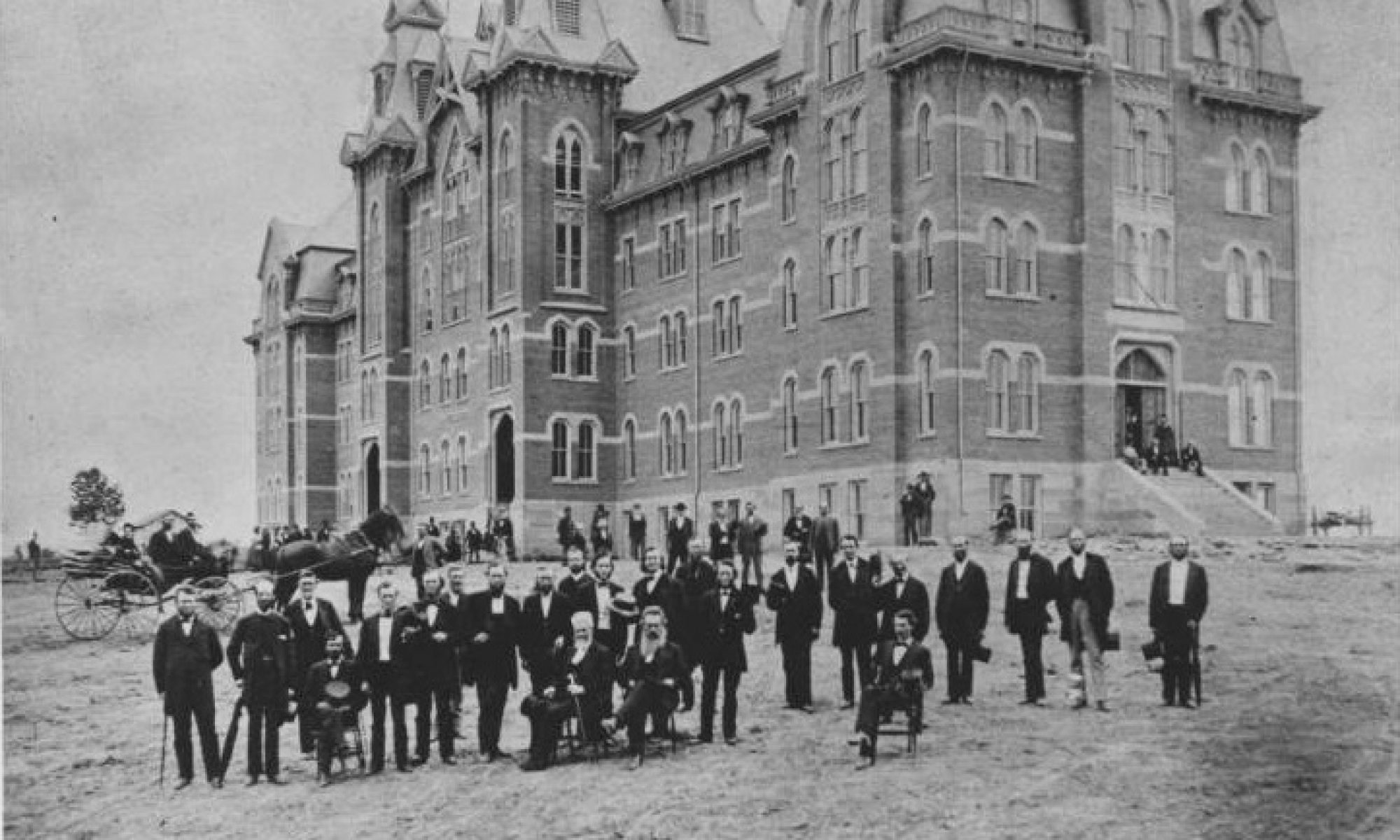Introduction | McCollester | Rexford | Cone | Knight | Priest | Church | Kolbe | Zook | Simmons | Auburn | Guzzetta | Muse | Elliot | Ruebel | Proenza | Scarborough | Wilson | Green | Miller
Norman P. Auburn
(1951-1971)
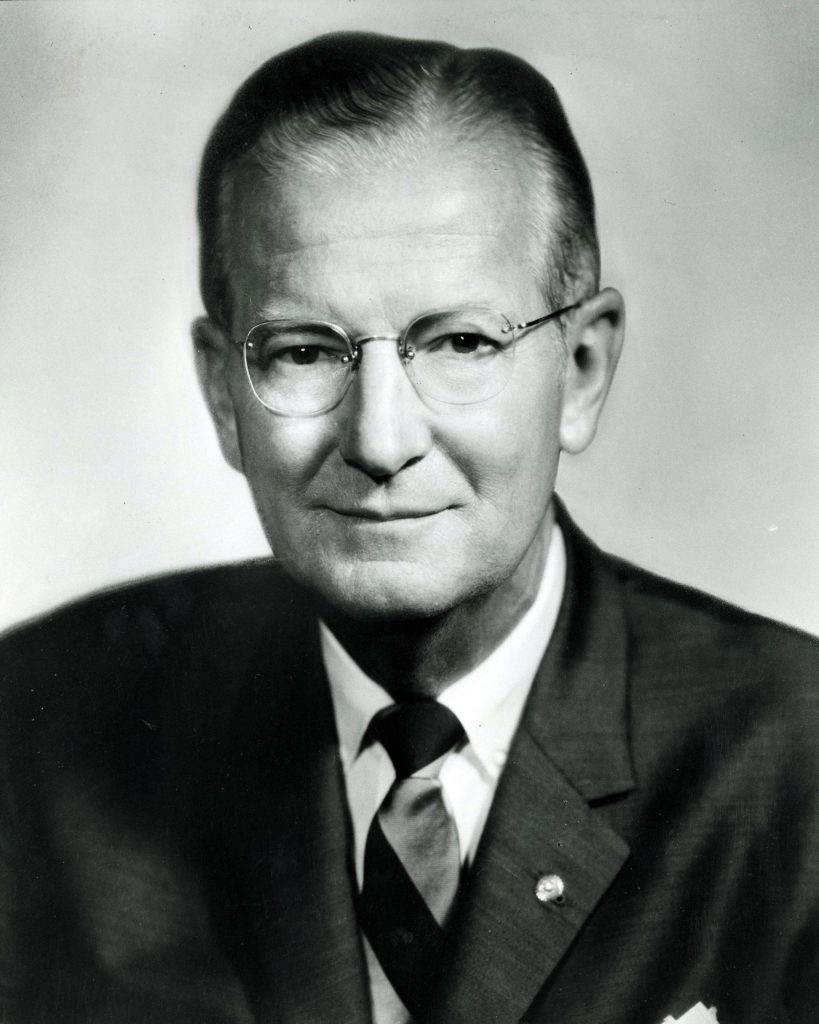

Norman P. Auburn was born on May 22, 1905 in Cincinnati, Ohio. He graduated from the University of Cincinnati (UC) with a B.A. in Political Science in 1927 and received an LL.D. from Parsons College in 1945, the first of his eight honorary doctorates. He spent five years in the construction trades industry as a manager and editor before returning to UC where he worked for 18 years in a variety of capacities, including Vice President, Dean of Administration, and Secretary of the Board of Trustees.
In 1951, Auburn was named the 10th president of The University of Akron. For 20 years (the longest tenure of any UA President) he stimulated the physical and academic growth of the university, adding four colleges and the School of Law, creating doctoral programs, and directing the institution’s transformation from a municipal university to a state university. He also created the Institute for Rubber Research, constructed numerous buildings, lead the nation’s first university-sponsored urban renewal project, and conducted the University’s first major fund-raising campaign. Because of the significant changes that he engineered, Auburn is regarded as one of the institution’s three founders.
During his presidency, Auburn took two working sabbaticals, one as Acting President of the Council for Financial Aid to Education, and the other as Special Assistant for University Relations for the U.S. Agency for International Development in Washington, D.C. During this time he also served as adviser to the President’s Committee for the White House Conference on Education and President of the Ohio College Association.
After his retirement 1971, Auburn served as an acting senior executive of numerous colleges and universities. He also served as a volunteer leader in several national higher education and charitable associations and foundations. In addition, he was active on many local boards, which earned him the Bert A. Polsky Humanitarian Award in 1997.
Norman Auburn married Kathleen Montgomery, who passed away in 1974. Three years later he married Virginia Kirk. He had four children, two stepdaughters, five grandchildren, and seven great-grandchildren by the time of his passing after a brief illness on July 21, 2003, at the age of 98.
“What the University has accomplished in the past can continue and be enriched and enlarged. . . . I forsee an institution that all of us who have cherished over the years will be increasingly proud of for its accomplishments.”
– Norman P. Auburn

From The University of Akron Photographs Collection in Archival Services of University Libraries
During President Auburn’s administration, numerous buildings were constructed on campus including a 33,000 square foot physical education building named Memorial Hall. The building was dedicated to the 1,500 men and women from Akron and Summit County who gave their lives during World War II. Other facilities erected during Auburn’s administration included Parke R. Kolbe Hall, Lee R. Jackson Field, and numerous residence halls.
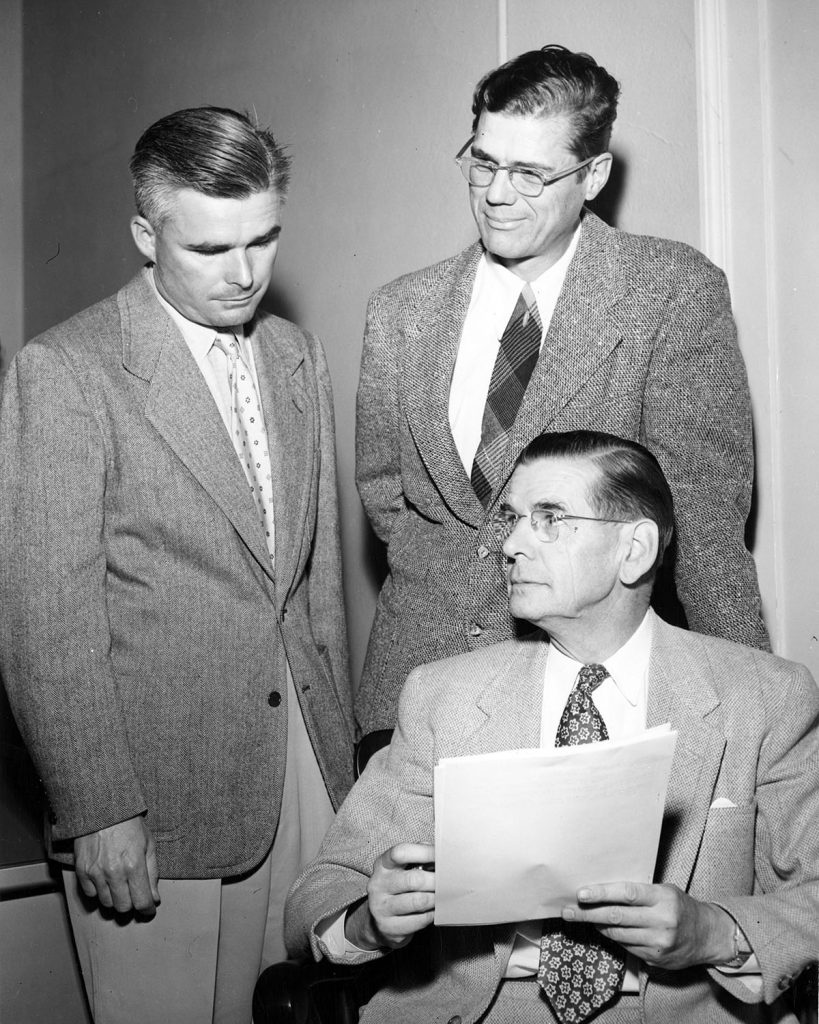
From The University of Akron Photographs Collection in Archival Services of University Libraries
During his administration, President Auburn added many new positions such as Dean of Administration to handle the growing enrollment. Donfred Gardner was appointed to this position. He also appointed Dr. E.D. Duryea, Jr. to the new position of Dean of the Evening and Adult Education Division.
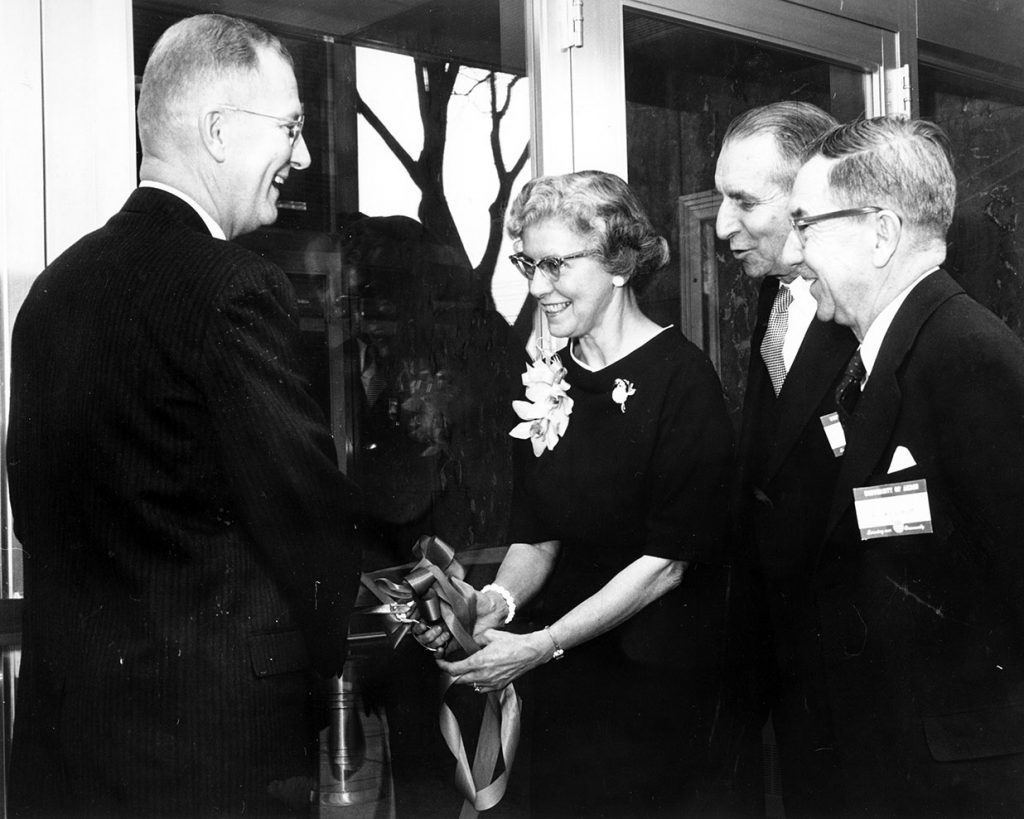
From The University of Akron Photographs Collection in Archival Services of University Libraries
During his administration, President Auburn focused on improving the University’s physical plant and constructing new buildings, including a new library and dormitory. The old library in Kolbe Hall was razed and a new one built in its place, which provided additional study and stack space. In this photograph, University Librarian Dorothy Hamlen and President Auburn cut the ribbon for the new building, in 1961.
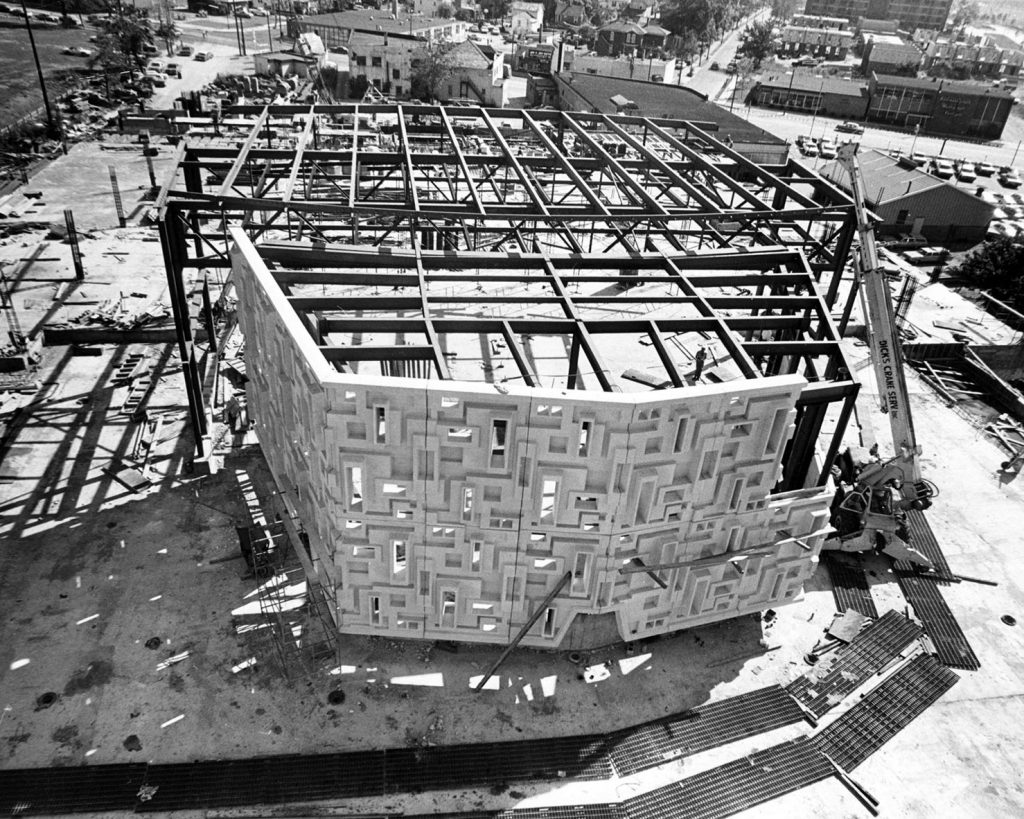
From The University of Akron Photographs Collection in Archival Services of University Libraries
In addition to the colleges of Business Administration, Law, Nursing, and Fine and Applied Arts, the Community & Technical College was created under President Auburn’s administration, in 1964. The following year, the University was granted $7.5 million in state and federal dollars to construct a building to house the college, which was named Schrank Hall in honor of Harry P. Schrank, first Chairman of the Board of Trustees of The University of Akron.
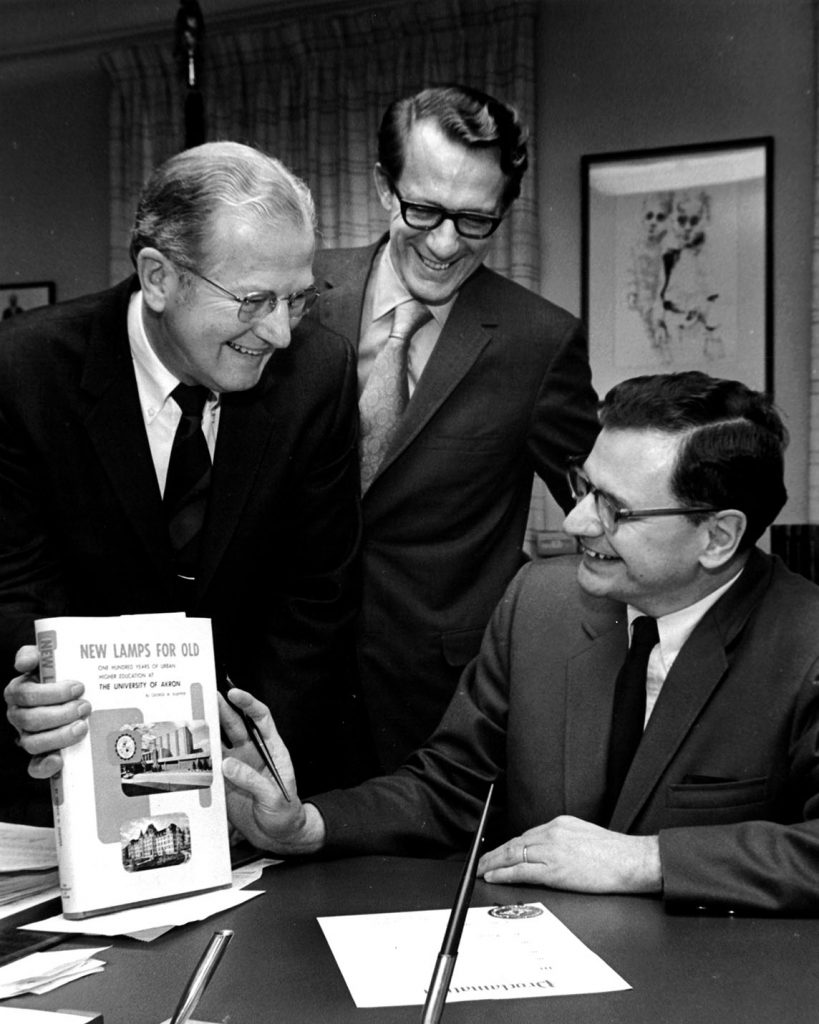
From The University of Akron Photographs Collection in Archival Services of University Libraries
During President Auburn’s administration, The University of Akron celebrated its 100th anniversary. The centennial celebrations included the publication of George W. Knepper’s comprehensive history of the University, “New Lamps for Old,” which he and President Auburn are showing to Akron Mayor John Ballard in the image above. Other commemorations included a centennial film, a centennial medallion, and an expanded homecoming called “Centennial Soul.”

From The University of Akron Faculty Publications Collection in Archival Services of University Libraries
President Auburn published numerous books and pamphlets during his lifetime. This includes A History of the Establishment of the Municipal University of Akron (1914), Akron’s Municipal University: An Example of Town and Gown Rapport (1953), and The First Hundred Years are the Hardest: The Story of The University of Akron (1970).
“President Auburn took a small institution and made it into a major player in higher education. . . . The name Auburn will long be remembered on campus as one of the stalwarts of the institution.”
– Dominic J. Guzzetta
